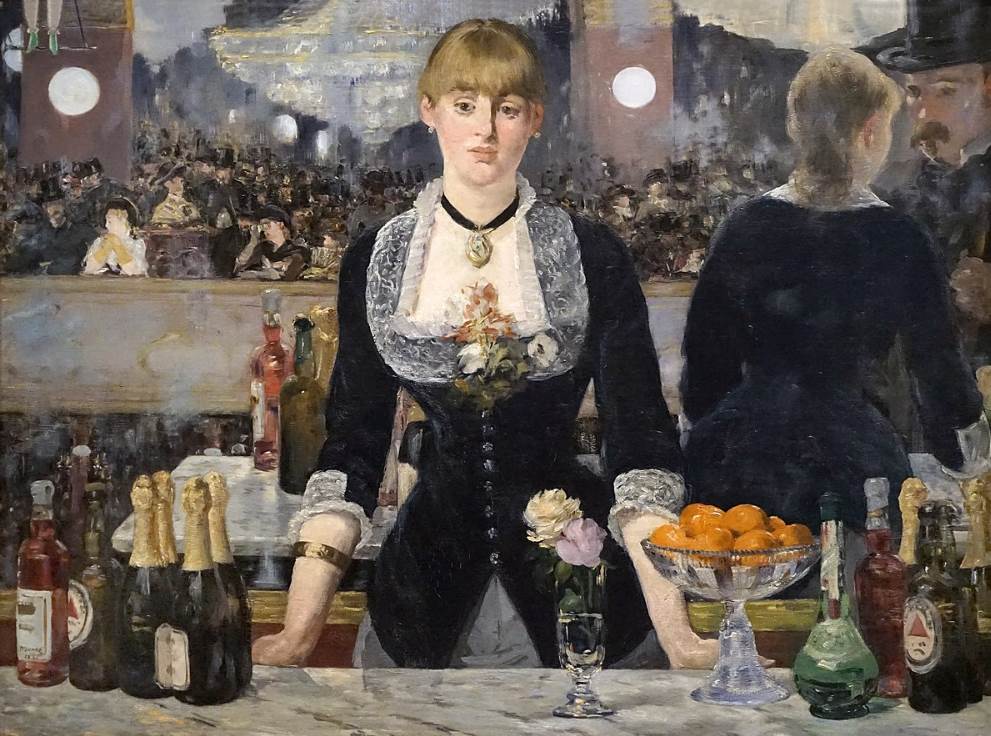When a young French artist produced some of the most controversial paintings of the 19th century, it radically changed the direction of modern art.
Édouard Manet (1832-1883) was never supposed to become a painter. His family was affluent and he could have easily built a career in either law or the navy as his father suggested.
When his uncle introduced him to the world of art by visiting the Louvre Museum in Paris as a child, it became his passion.
He traveled across Europe during the 1850s and studied the works of some of the most renowned artists in history. From this experience, he developed a style that formed the bridge between Realism paintings and Impressionist paintings.
Manet was one of the first artists to paint common scenes of people having a good time in Paris. These strongly influenced Impressionist artists in the following decades.
In this article, you’ll discover some of the most famous paintings by Édouard Manet. These are some of the most influential paintings of the 19th century.
1. Luncheon on the Grass
- Date created: 1863
- Dimensions: 208 × 264.5 centimeters (81.9 × 104.1 inches)
- Location: Musée d’Orsay, Paris, France
The Luncheon on the Grass or “Le Déjeuner sur l’Herbe” was originally known as “Le Bain” or “The Bath.” That’s remarkable because, at first glance, you barely notice the semi-nude woman in the background who appears to be taking a bath in a small pond.
It’s one of the revolutionary Édouard paintings that the artist completed in the early 1860s. This controversial painting sent shockwaves through the artistic community because of the semi-nude and completely nude women who are accompanied by two finely dressed gentlemen.
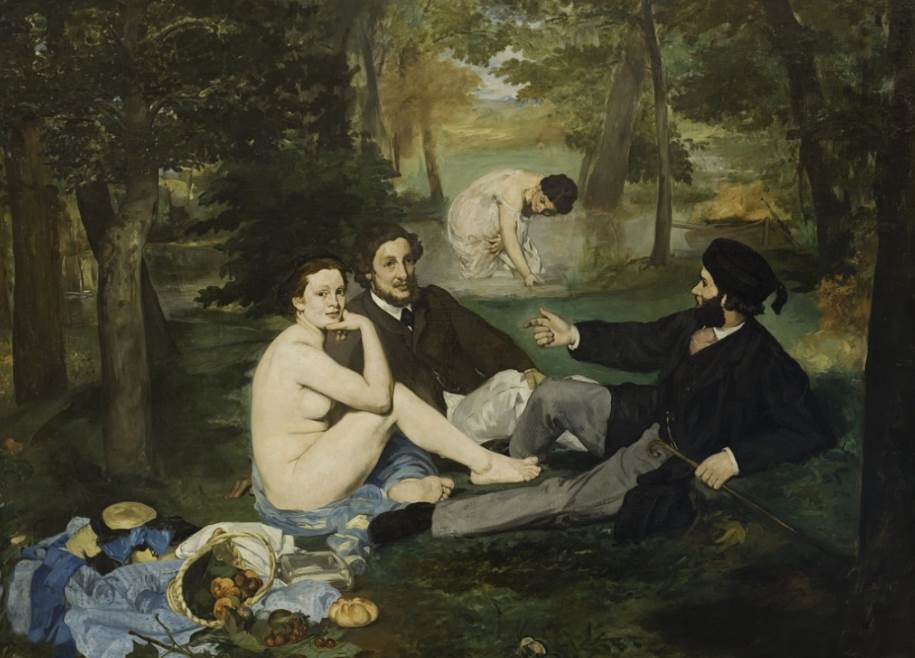
2. Music in the Tuileries
- Date created: 1862
- Dimensions: 76 × 118 centimeters (30 × 46 inches)
- Location: Hugh Lane Gallery, Dublin, Ireland
Music in the Tuileries is one of the first paintings that depict an outdoor scene of Parisians having a good time. We can see a large number of people who are gathering in the Tuileries Garden near the Louvre to enjoy a concert. We don’t see the musicians but we can imagine the noisy atmosphere of the place.
This painting had a profound impact on the Impressionist art movement that emerged around this period in history. Realism artists painted only what they could observe. The content of this work in combination with Manet’s typical painterly style transforms it into a work that closely resembles the ideals of the Impressionists.
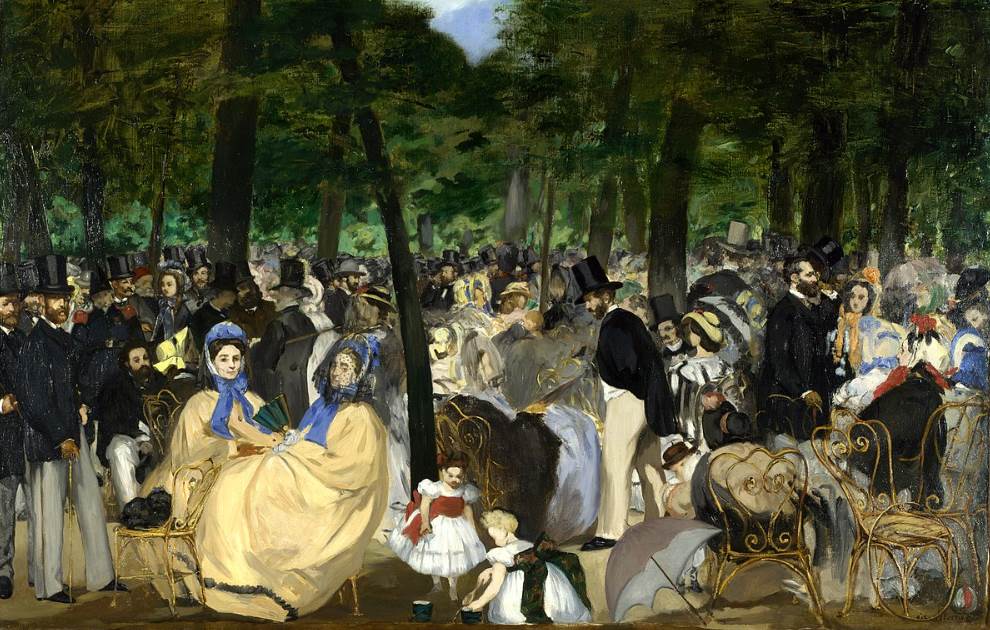
3. The Spanish Singer
- Date created: 1860
- Dimensions: 147.3 × 114.3 centimeters (58 × 45 inches)
- Location: MET Museum, New York City, United States
The Spanish Singer was one of the earliest paintings by Édouard Manet and depicts a Spanish singer who is playing the guitar. It was the first painting to be accepted at the Paris Salon of 1861 along with a painting depicting the artist’s parents.
This painting clearly shows the influence of one of Manet’s idols during this period, Diego Velázquez (1599-1660). The elements in the bottom right corner resemble those depicted in some of the Spanish artist’s early phase in Seville. The painting was well received at the Salon and launched Manet’s career.
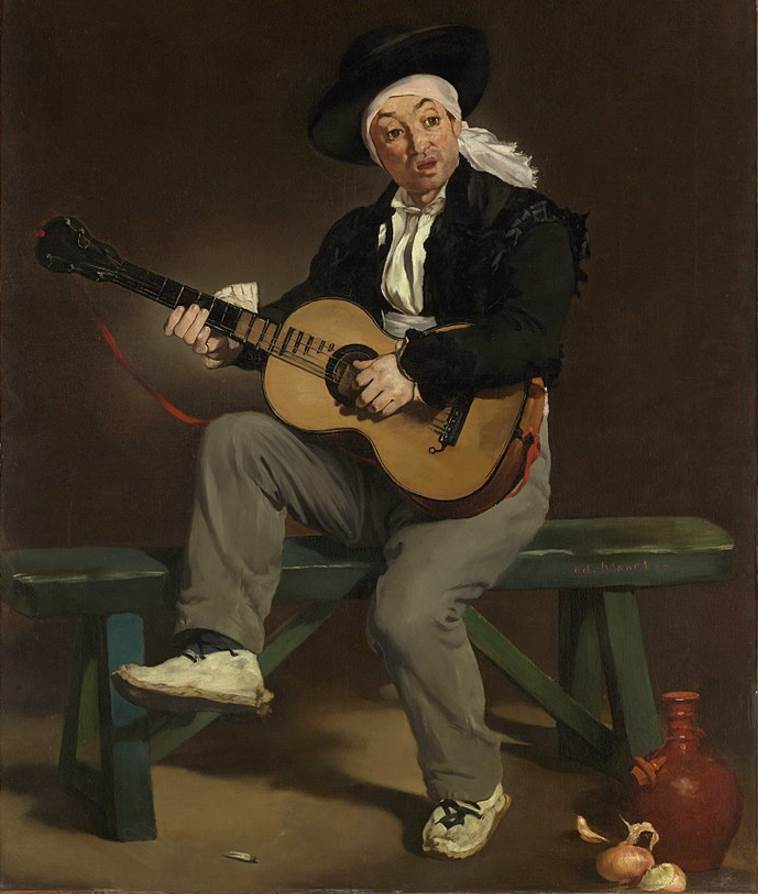
4. Olympia
- Date created: 1863
- Dimensions: 130.5 × 190 centimeters (51.4 × 74.8 inches)
- Location: Musée d’Orsay, Paris, France
Olympia is arguably one of the best-known paintings by Manet. It depicts a nude reclining woman who is accompanied by a servant who appears to be bringing her flowers. Both women were professional art models. The nude woman was named Victorine Meurent (1844-1927) and the servant Laure.
The praise that Mant received for The Spanish Singer quickly disappeared when he exhibited Olympia at the Paris Salon of 1865. The most shocking part for contemporary viewers was her gaze. This identified her as a prostitute. The painting was inspired by a Titian painting titled the “Venus of Urbino” (1534).
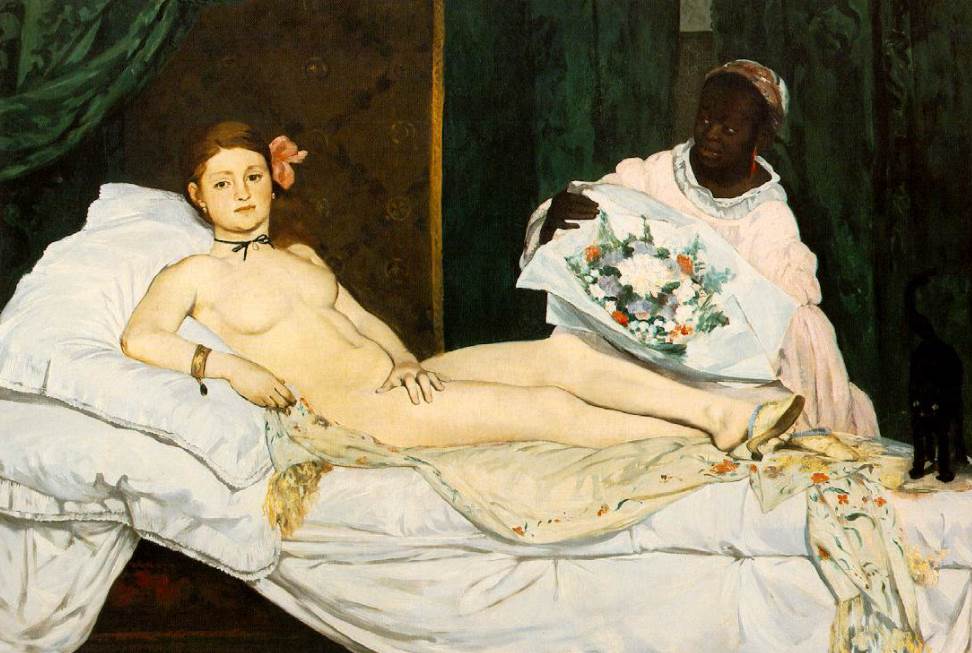
5. In the Conservatory
- Date created: 1878-1879
- Dimensions: 115 × 150 centimeters (45.3 × 59.1 inches)
- Location: Alte Nationalgalerie, Berlin, Germany
In the Conservatory is a painting that Manet produced in a conservatory in the Rue d’Amsterdam in Paris. This place was owned by a Swedish painter named Georg von Rosen (1843-1923) and Manet used it temporarily as a studio during the late 1870s.
We know that the painting depicts a couple of married friends of Manet named the Guillemets who owned a clothing shop. What they are doing remains up for debate. The cold stare of the woman and the fact that the husband isn’t sitting next to her make it appear as if they are quarreling.

6. The Balcony
- Date created: 1868
- Dimensions: 170 × 124 centimeters (67 × 49 inches)
- Location: Musée d’Orsay, Paris, France
The Balcony depicts 4 people who are standing on a balcony. Just about everybody in the painting has been positively identified. The woman sitting down is the painter Berthe Morisot (1841-1895) and next to her we can see Fanny Claus (1846-1877), a violinist.
The standing man has been identified as Jean Baptiste Antoine Guillemet, a French painter whose career closely resembles that of Manet. The partially obscured figure in the background is most likely Léon Leenhoff, the artist’s son. It’s one of the paintings that remained with the artist until he died in 1883.
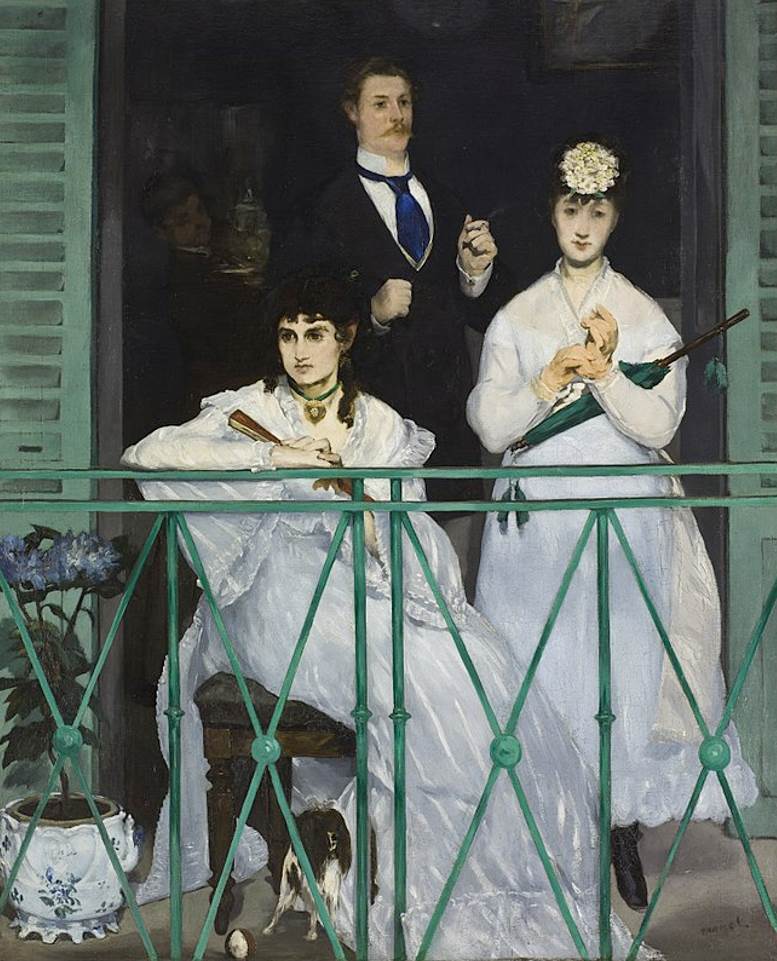
7. The Railway
- Date created: 1873
- Dimensions: 93.3 × 111.5 centimeters (36.75 × 45.12 inches)
- Location: National Gallery of Art, Washington, D.C., United States
The Railway is also known as “Gare Saint-Lazare” and is a remarkable painting in Manet’s Oeuvre. It depicts Victorine Meurent, the woman who also was the model for the Luncheon on the Grass and Olympia. It was the final time that Manet painted his favorite model.
The title Gare Saint-Lazare is a reference to the train station in Paris. We can see an iron fence of the station and steam from trains in the background. The painting was exhibited at the Paris Salon of 1874 and received a rather lukewarm response from art critics.

8. The Execution of Emperor Maximilian
- Date created: 1867-1869
- Dimensions: 252 x 305 centimeters (99.2 x 120 inches)
- Location: Kunsthalle Mannheim, Germany
The Execution of Emperor Maximilian is the title of several paintings of the same subject that Manet completed in the late 1860s. It depicts the execution of Emperor Maximilian I who was the ruler of the Second Mexican Empire, a client state of France.
Manet completed 3 large oil paintings, a sketch, and a lithograph on this subject. The only finished painting that remains intact is located in Mannheim. The pairing at the National Gallery in London was cut up and the third version was never completed.
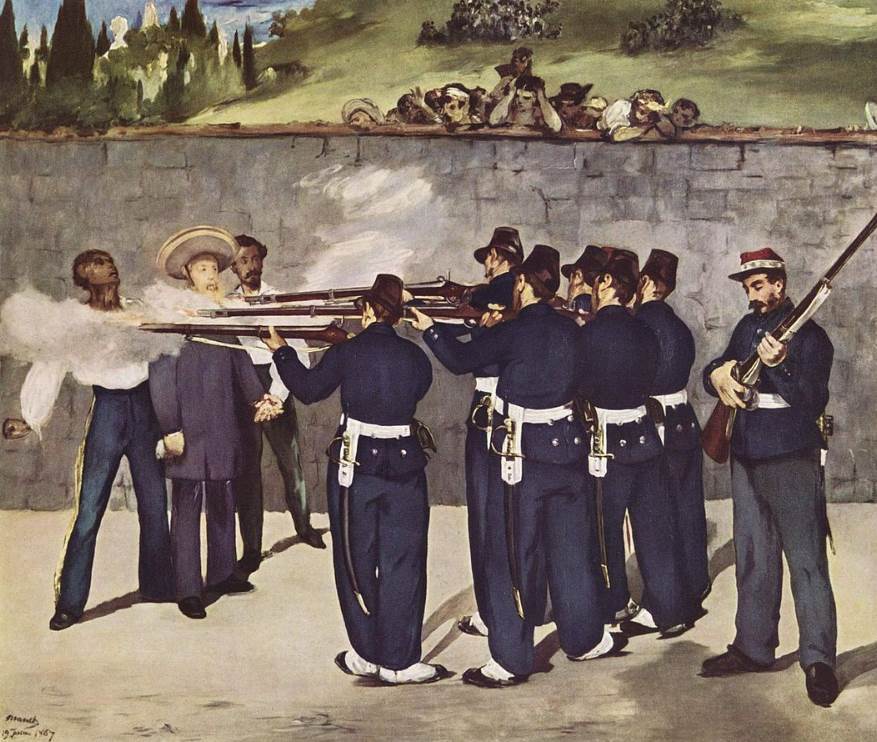
9. The Café-Concert
- Date created: 1879
- Dimensions: 47.3 × 39.1 centimeters (18.6 × 15.4 inches)
- Location: Walters Art Museum, Baltimore, United States
The Café-Concert is one of several scenes captured by Manet that take place in a café. He painted the people as they were and this includes men and women drinking beer and other beverages. In this particular painting, we can see the waitress chugging down a beer.
The establishment that this painting depicts has been identified as the Brasserie Reichshoffen on the Boulevard Rochechouart. This is at the foot of Montmartre Hill in the northern part of Paris. Manet referred to his café scenes as “Des Oeuvres Sinceres or “Sincere Works.”
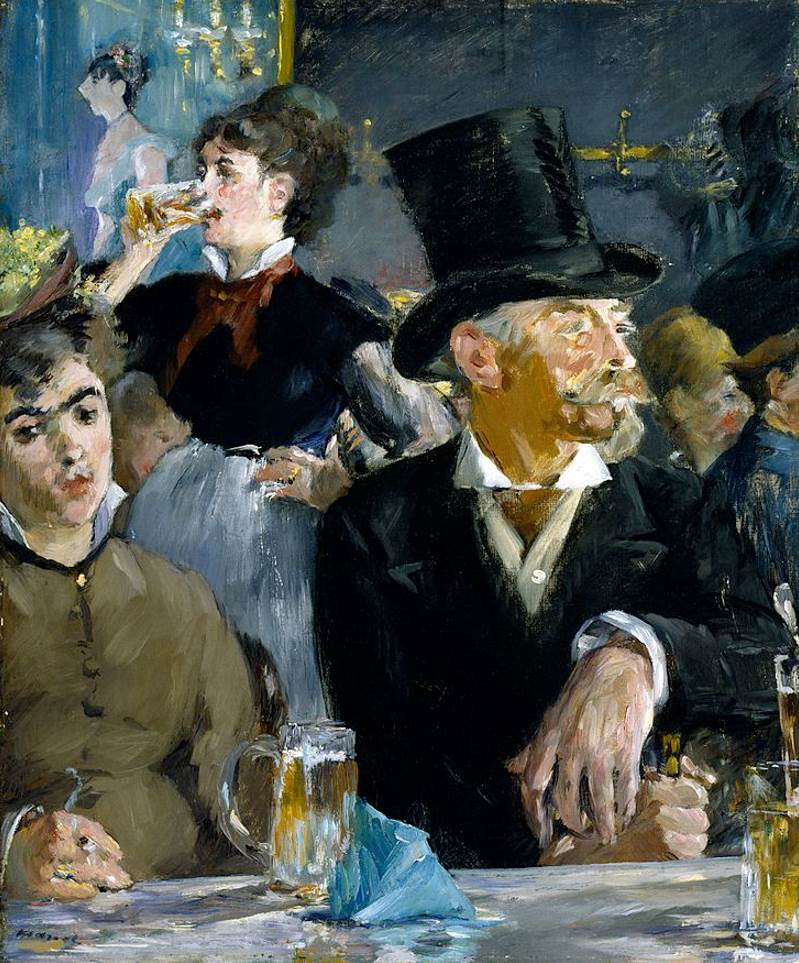
10. A Bar at the Folies-Bergère
- Date created: 1882
- Dimensions: 96 × 130 centimeters (37.8 × 51.2 inches)
- Location: Courtauld Gallery, London, United Kingdom
A Bar at the Folies-Bergère is without a doubt the most famous of all café scenes that Édouard Manet produced. It was completed in 1882 which means that it was one of the final major works by the artist as he passed away from a combination of syphilis and rheumatism the following year.
The painting depicts a scene at the Folies Bergère in Paris, an opera venue that was transformed into a popular nightclub. The painting once hung above the piano of the composer Emmanuel Chabrier who was a friend of Manet. The woman in the bar was a woman named Suzon who worked at the nightclub in the early 1880s.
